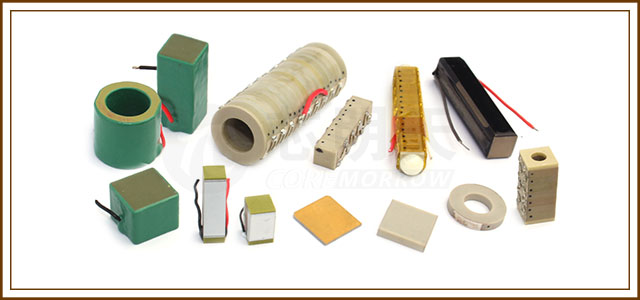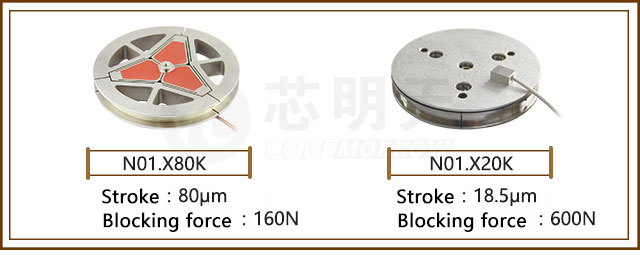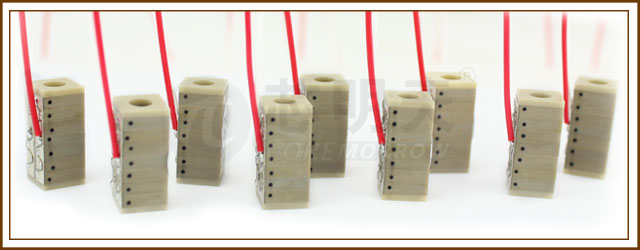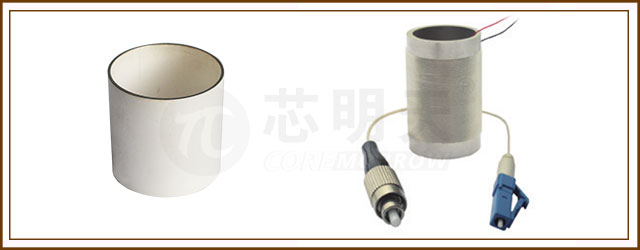
Optical phase modulation based on PZT
With the update of production technology and the continuous expansion of applications, PZT have been widely entered into people's vision, and their popularity is also rising.
PZT have the inverse piezoelectric effect, that is, they can produce micro-displacements corresponding to voltage signals under the application of voltage signals, and have the characteristics of nano-scale high resolution and microsecond response speed, which meets the accuracy of optical phase modulation. PZT phase shifter is also the main component of various interferometers, and its accuracy will directly affect the measurement accuracy of the interferometer.
According to the difference in the interference optical path, the number and types of PZT used are different, generally can be divided into single and multi-branch, and according to different usage scenarios of customers, CoreMorrow will provide variety of phase modulation Phase shifted piezoelectric ceramic solution.
When optical fiber is used as the propagation medium of light, such as fiber differential interferometer, tunable fiber laser, etc., the phase of light will change with the propagation length. For example, when an optical fiber is wound on PZT, when the voltage signal is applied, the piezoelectric ceramic is slightly deformed, thereby changing the length and refractive index of the optical fiber wound on the piezoelectric ceramic. When the piezoelectric ceramic undergoes periodic micro-deformation, the fiber length changes periodically, and the phase of the propagating light also changes periodically. For this scenario, the types of optional PZT piezoelectric ceramics are very diverse, affected by many factors such as size, delay time, and adjustment methods.
Piezo Fiber Stretcher
For this situation, you can use the CoreMorrow N01 series fiber stretcher, which has two versions, both with fiber winding groove, the fiber can be directly wound in the groove, and the length of the wound fiber can reach 100 meters the above. Its displacement range is large, and the radial displacement can reach 80μm, which can greatly reduce the driving voltage and still produce a large displacement. For example, at 10V, the radial displacement can still reach more than 5μm.
Piezo Stacks with Aperture
Another way is to use piezoelectric ceramic stack with aperture, which deforms along the length and has a through hole in the center. Through the periodic elongation deformation of the piezoelectric ceramic, the length of light propagation can be periodically changed, thereby changing the phase of light. This kind of piezoelectric ceramic can produce displacement> 1.5μm under 15V voltage, and basically eliminate the negative effects of voltage signal.
Piezoelectric stack with aperture have a dimensional tolerance of ± 0.01mm and a flatness of up to ± 5μm, which is very suitable for phase modulation of fiber optics and can guarantee the accuracy of interferometers.
The frequency and amplitude of the output light intensity of the fiber interferometer have a linear relationship with the frequency and magnitude of the voltage signal applied to the PZT. An interferometer using piezoelectric ceramic optical phase modulator has very high sensitivity and is very suitable for monitoring vibration sources in the external environment, as well as monitoring the vibration frequency and amplitude of the vibration source.
Piezo Cylinder
Another way is to use piezoelectric ceramic cyinders/rings. It produces expansion and contraction movements in the radial direction. Under the action of the periodic voltage signal, the piezoelectric ceramic cylinder produces periodic expansion movement, which causes the length and refractive index of the optical fiber wound on the outer diameter surface to change periodically, thereby periodically changing the phase of the transmitted light.
Piezo Phase Shifter for Large-aperture Interferometer
Because the principle is the same, for the large diameter horizontaloptical path of the Fizeau interferometer, the reflector it uses is generally a heavier spherical lens, and its measurement process is by adjusting the position of the reflector. It is difficult for single PZT piezoelectric ceramic to meet the requirements, so generally multiple PZT piezoelectric ceramics are used internally, evenly distributed around a concentric circle.
Large-aperture interferometers generally have larger loaded lenses and require larger central through holes. For this application requirement, CoreMorrow can customize the design of PZT piezoelectric phase shifters, such as P77 series piezoelectric phase shifters, according to the structure of the interferometer. It has a bearing capacity of up to 15kg when placed upright, 5kg when placed horizontally, and 10kg when placed upside down, and the central aperture can be arbitrarily selected from φ36 to φ260mm, and can be customized for larger apertures and larger loads. At present, the stroke of the standard product is 6μm, 20μm, 50μm, etc.
This series of piezoelectric phase shifter is very suitable for laser interferometer, used to detect the flatness of lenses and so on.
- Previous article:CoreMorrow Piezo Nano Motion Positioning System
- Next article:CoreMorrow XYZ large-stroke Piezo Nanopositioning Stage







